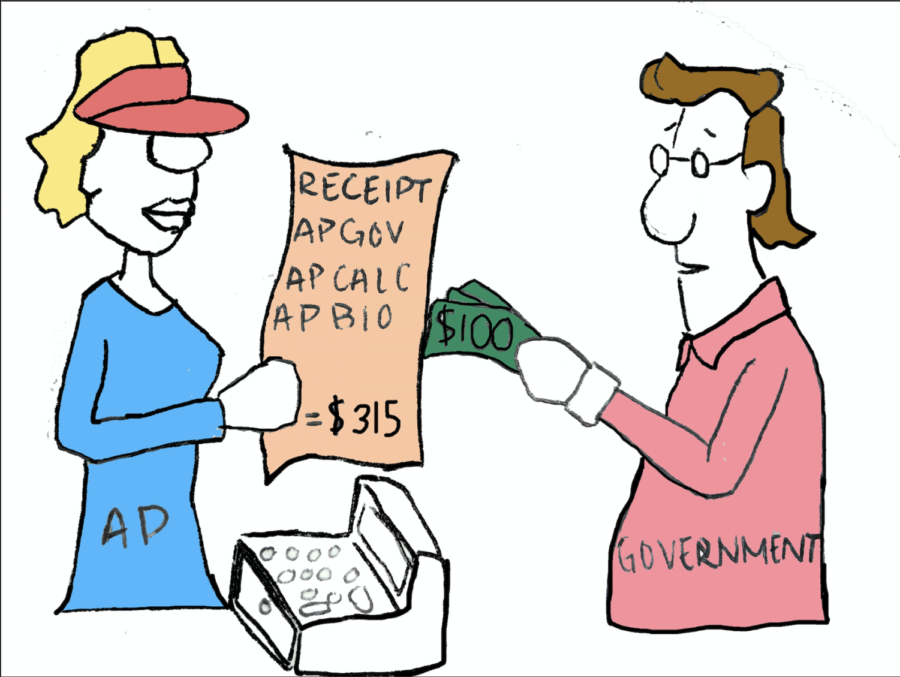Cutting Down AP Exam Fees Will Help Students Make the Cut
As students nationwide grow concerned over the rising price of AP exam fees, the United States Department of Education has to step in and cover some or all of these expenses to ensure fairness in the college admission process.
In 2019, over 5.1 million Advanced Placement (AP) tests were administered to students across the country, almost a 75 percent increase over the number of tests taken a decade ago, according to the College Board. AP testing has quickly evolved into a billion dollar industry, according to EdWeek, and is quickly establishing dominance in the college application process. According to the College Board, the average high school student takes three AP exams, each of which costs nearly $100. With 86 percent of colleges nationwide placing some kind of restrictions on AP credit, according to CNBC, the potential benefits of AP testing are shrinking alongside their growing price. Without aid, these standardized tests can quickly become a financial burden unless federal and state aid extends its reach.
“I know people who have taken seven AP classes, which is like 700 bucks, which is so much just for college,” senior Kameran Mody said. “[AP exam fees] put a lot of pressure on students with less money and less opportunity to pay for these classes, since those who can pay for it will save a lot of money in the future.”
The United States Department of Education’s Every Student Succeeds Act has already taken measures to alleviate testing expenses with policies such as the Advanced Placement Test Fee Program that can cut down on AP exam costs for low-income students down to $5, but the federal and state governments can still do more.
Last year, less than 20 percent of the USDE budget was spent on assistance grants that included the AP Test Fee program, whereas less successful programs with lower participation, such as the Head Start program (a Department of Health initiative to provide education and health services to low-income families), have been eating up more money year by year.
On Sept. 13, California Assembly Bill AB-1233 was enrolled in Congress after passing Senate, which would “establish a grant program, to be administered by the State Department of Education, for purposes of awarding grants to cover the costs of Advanced Placement examination fees for eligible low-income high school pupils and foster youth high school pupils.” It is crucial that bills like these are funded to extend the government’s reach in the realm of standardized test fees.
“Back when I was in high school, one AP test was $60-70, but there was an assistance program in my district for low-income students, so I paid five dollars per test,” physics teacher Anthony Pham said. “I ended up taking 14 tests, which ended up costing less than one test nowadays. It encouraged me to take more tests, because the consequences of not passing were extremely low.”
Currently, students with more affluent backgrounds can afford to take more standardized tests, potentially increasing their chances at getting into higher level schools. At Portola High, students who qualify for free or reduced lunch pay only 25 dollars per exam, but this may not be the case everywhere. In order to ensure equity for students, the government should maintain funding for bills like AB-1233 and further extend the reach of grants that aid standardized testing like AP tests, which will greatly help students nationwide prepare for college and the application process.
Your donation will support the student journalists of Portola High School. Your contribution will allow us to purchase equipment and cover our annual website hosting costs.

Akshay Raj is your co-editor-in-chief of the Portola Pilot this year. In his final year as Portola Pilot staff, he is beyond excited to help bring...




